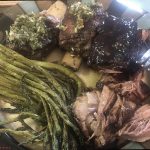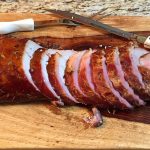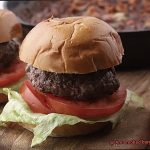Are you a bona fide rib enthusiast?
Well, prepare your taste buds for a wild ride. Today, we’re tackling the age-old question: should ribs be tamed in the oven or set free on the grill?
Both methods have their merits and offer tantalizingly different dining experiences. Imagine this: tender, fall-off-the-bone ribs, dripping with succulent juices and infused with that irresistible smoky essence, straight from the grill.
But hold on just a minute. Cooking ribs in the oven brings forth consistent and controlled heat, guaranteeing flawlessly cooked meat every single time.
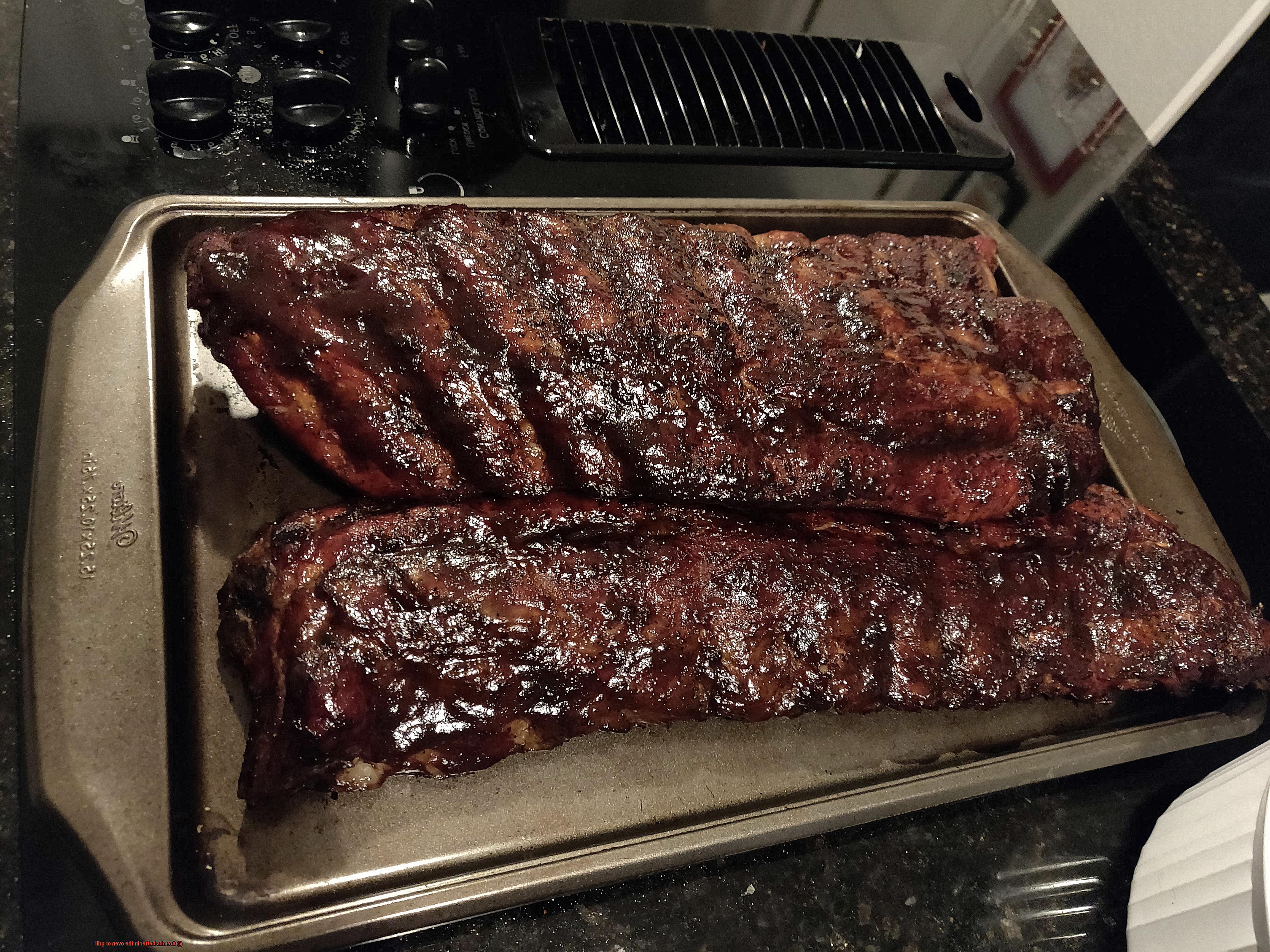
So grab your bib and get ready to embark on a saucy adventure.
Contents
Advantages of Cooking Ribs in the Oven
The even cooking provided by the oven ensures that every part of the ribs is cooked to perfection, resulting in a consistent texture and taste throughout. No more worrying about unevenly cooked or undercooked ribs.
Furthermore, the controlled environment of the oven helps to seal in the moisture and flavors of the meat. This means that your ribs will come out tender and juicy, with all the delicious flavors locked inside.
Cooking ribs in the oven is also incredibly convenient and easy. Whether you don’t have access to an outdoor grill or simply prefer to cook indoors, the oven offers a hassle-free cooking method. With minimal preparation and monitoring required, you can set the temperature and timer and let the oven do its magic. This frees up your time to attend to other tasks or simply relax and enjoy the aroma wafting through your kitchen.
Another advantage of using the oven for cooking ribs is that it allows you to enjoy this delectable dish all year round. Unlike grilling, which is often associated with outdoor activities during warmer months, the oven provides a reliable indoor cooking option regardless of the season or weather conditions.
The versatility of the oven is also worth mentioning. You can experiment with different cooking techniques such as slow-roasting or braising to enhance the flavor and texture of your ribs. The oven provides a range of options for customization based on your personal preferences.
Additionally, cooking ribs in the oven eliminates the risk of flare-ups caused by dripping fat or marinades coming into contact with open flames. This not only ensures safer cooking but also minimizes any potential charring or burning of the meat.
And let’s not forget about cleanup. Cleaning up after cooking ribs in the oven is generally easier compared to grilling. With no grates or charcoal to deal with, simply removing and cleaning the baking dish or foil-lined tray used for cooking is usually sufficient.
Advantages of Cooking Ribs on the Grill
Grilling ribs on the barbecue is no doubt a mouthwatering experience that brings out the best in this succulent cut of meat. The advantages of cooking ribs on the grill are numerous, and they go beyond simply satisfying your taste buds. Let’s dive into the reasons why grilling ribs is the ultimate way to achieve flavor perfection.
First and foremost, grilling enhances the flavor of ribs like no other cooking method. The open flame and direct heat from the grill create a smoky and charred flavor that cannot be replicated in an oven. The marriage between wood chips or charcoal and the meat creates a symphony of flavors, resulting in a depth and complexity that will have you craving more.
Not only does grilling bring out incredible flavors, but it also creates a crispy and charred exterior that adds a delightful texture to the dish. The intense heat sears the surface of the meat, producing a crust that is both crunchy and flavorful. This contrast in texture, with a tender and juicy interior, is what makes grilled ribs so irresistible.
Furthermore, grilling allows for better moisture retention compared to other cooking methods. The direct heat on the grill helps seal in the natural juices and flavors of the meat, resulting in tender and juicy ribs. As the fat in the ribs melts during grilling, it bastes the meat from within, keeping it moist and succulent.
The versatility of grilling is another advantage when it comes to cooking ribs. Whether you prefer a sweet and sticky barbecue sauce or a dry rub packed with herbs and spices, grilling allows you to experiment with various marinades, sauces, and seasonings. Additionally, you have control over the temperature and cooking time on a grill, allowing you to achieve different levels of doneness according to your preferences.
Last but not least, cooking ribs on a grill provides more than just delicious food; it offers an enjoyable outdoor experience. Grilling ribs is often associated with gatherings, barbecues, and outdoor parties, creating a festive and social atmosphere. The aroma of sizzling ribs wafting through the air, the sound of laughter and conversation, and the warmth of the sun all contribute to a memorable experience that cannot be replicated indoors.
The Low and Slow Method for Oven-Cooked Ribs
The low and slow method for oven-cooked ribs is here to save the day. This magical method allows you to achieve the same tender and flavorful results as grilling, right in your own kitchen.
To start, prepare the ribs by removing the membrane from the back of the rack. Use a butter knife to loosen one corner of the membrane, then grip it with a paper towel and pull it off. This step is essential for tenderizing the meat and allowing the flavors to penetrate.
Next, season the ribs with a dry rub of your choice. Get creative with spices like salt, pepper, paprika, garlic powder, and brown sugar. Coat both sides of the ribs evenly with the dry rub, ensuring every bite is bursting with flavor.
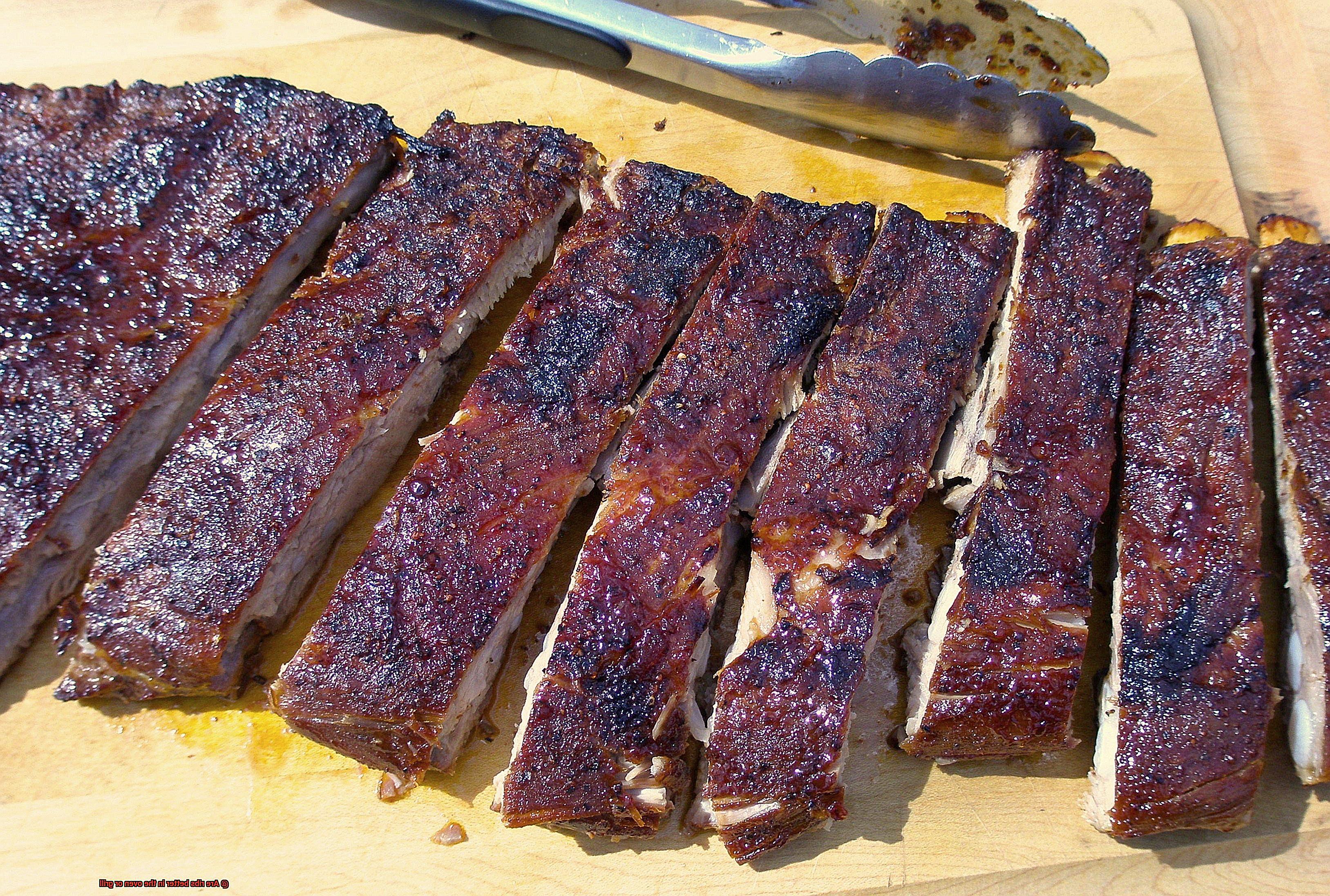
Once seasoned, let the ribs sit at room temperature for about 30 minutes. This allows the flavors to meld and infuse into the meat, resulting in a deliciously seasoned rib.
Preheat your oven to a low temperature, typically around 275°F (135°C). This low and slow cooking method is key to breaking down the connective tissues in the meat, resulting in incredibly tender and juicy ribs.
Now it’s time to cook. Place the ribs on a baking sheet or in a roasting pan, bone side down. Cooking times will vary depending on the size and thickness of your ribs, but as a general guideline, expect to cook them for about 2 to 3 hours. To ensure perfectly cooked meat, use a meat thermometer and make sure they reach an internal temperature of 190°F (88°C).
While the ribs are cooking, prepare your choice of barbecue sauce or glaze. Whether homemade or store-bought, this sauce adds a flavorful finishing touch. Brush it onto the ribs during the last 30 minutes of cooking time, allowing it to caramelize and create a mouthwatering glaze.
Once the ribs are done cooking, remove them from the oven and let them rest for about 10 minutes. This allows the juices to redistribute, keeping the meat moist and tender. Finally, slice the ribs between each bone and serve them hot. The result? Tender and juicy ribs with a delicious smoky flavor from the low and slow cooking method.
Grilling Ribs – Higher Temperatures and Shorter Cooking Times
Here are the key benefits:
- Delicious crust: When you grill ribs at higher temperatures, the sugars in the barbecue sauce or dry rub caramelize, creating a mouthwatering caramelized layer on the outside of the meat. This crust adds depth of flavor and a pleasant texture to each bite, making your ribs even more enjoyable.
- Leaner final product: Grilling at higher temperatures helps to render the fat more efficiently. As the ribs cook over direct heat, the fat begins to melt away, resulting in a leaner and less greasy final product. This is great news for those who prefer their ribs to be less fatty.
- Shorter cooking time: Traditional low and slow cooking methods can take several hours, but by grilling at higher temperatures, you can significantly reduce the cooking time without sacrificing tenderness or flavor. This is especially helpful when you’re short on time but still want to enjoy deliciously grilled ribs.
To achieve this style of grilling, here are some tips:
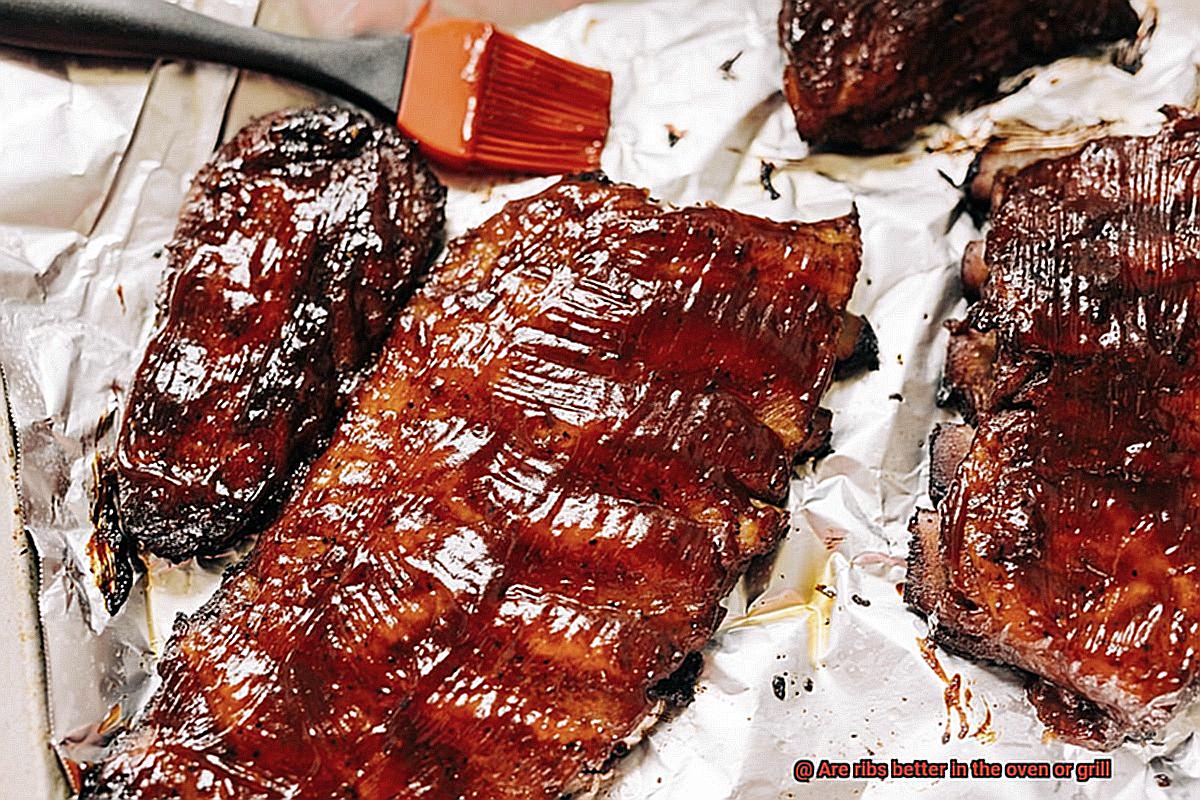
- Preheat your grill to a high temperature, typically around 400-450°F (204-232°C). This ensures that the ribs cook quickly and evenly.
- Use indirect heat by placing the ribs on one side of the grill while keeping the burners or coals on the other side. This technique allows for even cooking without direct exposure to intense heat, reducing the risk of overcooking or charring.
- Consider using the “Texas crutch” method by wrapping the ribs in aluminum foil during part of the grilling process. This helps to lock in moisture and further tenderize the meat.
- Keep a close eye on the grill temperature throughout the cooking process to prevent any flare-ups or burning.
Factors to Consider When Cooking Ribs in the Oven or on the Grill
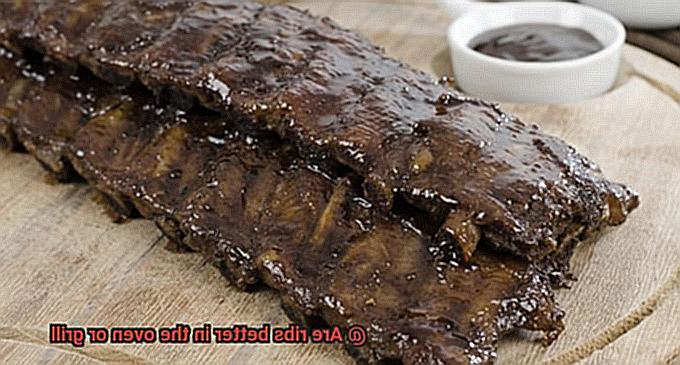
When it comes to cooking ribs, there are several factors to consider when deciding whether to cook them in the oven or on the grill. Each method has its own advantages and can result in deliciously cooked ribs, but it ultimately depends on your personal preferences and what you value most in your ribs.
- Flavor: Grilling ribs over an open flame can impart a smoky and charred flavor that many people find irresistible. The flames lick the meat, leaving behind beautiful grill marks and a mouthwatering aroma. On the other hand, cooking ribs in the oven can result in a tender and juicy meat with a more subtle flavor. The slow and gentle heat of the oven allows the flavors of the marinade or rub to penetrate deep into the meat, creating a rich and flavorful bite.
- Time: Grilling ribs typically requires less cooking time compared to using an oven. The intense heat of the grill can sear the meat quickly, resulting in juicy and perfectly cooked ribs in a shorter amount of time. On the other hand, cooking ribs in the oven usually involves a longer cooking process at lower temperatures. This slow and low method allows the collagen in the ribs to break down, resulting in tender and fall-off-the-bone meat.
- Convenience: Grilling requires outdoor space, appropriate weather conditions, and access to a grill. It also requires constant monitoring and tending to ensure that the ribs are cooked evenly and do not burn. On the other hand, cooking ribs in the oven is more convenient as it can be done indoors regardless of weather conditions. It also allows for hands-off cooking, where you can simply set a timer and let the oven do its magic while you attend to other tasks.
- Texture: Grilling ribs can result in a slightly charred exterior with a crispy bark, while still maintaining a juicy and tender interior. This combination of textures is highly sought after by many barbecue enthusiasts. The high heat of the grill caramelizes the sugars in the marinade or rub, creating a flavorful crust on the outside. On the other hand, cooking ribs in the oven tends to yield a more uniform and tender texture throughout the meat, with less emphasis on the crispy exterior.
- Versatility: While grilling may be the traditional method for cooking ribs, the oven offers more control over the cooking process. You can experiment with different marinades, rubs, and cooking techniques when using the oven, allowing for greater customization of flavors. Additionally, the oven can accommodate larger quantities of ribs at once, making it a suitable option for feeding a crowd. Grilling, on the other hand, provides a unique smoky flavor that cannot be replicated in an oven.
Hybrid Methods for Combining Oven and Grill Cooking
Combining oven and grill cooking when making ribs offers a range of advantages that can take your rib-cooking game to the next level. Here are some key benefits:
- Enhanced Flavor: By using a combination of oven and grill cooking, you can achieve a perfect balance of smoky flavors and tender meat. The low and slow method in the oven allows the ribs to become tender and juicy while retaining their natural flavors. Finishing them off on the grill adds that desirable smoky flavor and creates a charred crust that enhances the overall taste.
- Textural Appeal: The combination of oven and grill cooking techniques results in ribs with a delectably crispy exterior and tender interior. Slow-cooking in the oven helps break down tough connective tissues, resulting in fall-off-the-bone tenderness. The final step on the grill adds a caramelized crust that provides a satisfying contrast to the tender meat.
- Versatility: Combining oven and grill cooking allows for greater versatility in flavor profiles. You can experiment with different rubs, marinades, and barbecue sauces to customize the taste of your ribs. The oven cooking phase provides an opportunity to infuse flavors into the meat, while grilling adds that smoky essence that many barbecue enthusiasts love.
- Precise Temperature Control: By using both the oven and the grill, you have better control over temperature throughout the cooking process. In the oven, you can set a low temperature for slow-cooking, ensuring even heat distribution and preventing overcooking. On the grill, you can adjust the heat to achieve the desired level of char and caramelization without compromising on tenderness.
- Time Efficiency: While slow-cooking in the oven takes time, it allows you to multitask or prepare other dishes while your ribs are cooking. Once the initial low and slow phase is complete, finishing off on the grill takes only a few minutes per side to develop the desired char and smoky flavor. This combination of cooking methods allows you to efficiently cook ribs without compromising on taste.
Personal Preference is Key
When it comes to cooking ribs, personal preference is the key ingredient. The decision of whether to cook them in the oven or on the grill depends on individual taste and desired outcomes. Both methods have their own unique advantages and deliver delicious results. In this essay, we will explore the reasons why personal preference plays a significant role in deciding how to cook ribs.
Grilling for the Smoky and Charred Flavor:
For those who crave a smoky and charred flavor, grilling is the way to go. The direct exposure to high heat on the grill caramelizes the meat, creating a delicious crust that adds a delightful texture to the ribs. The smokiness from the grill infuses an extra layer of flavor that many barbecue enthusiasts find irresistible.
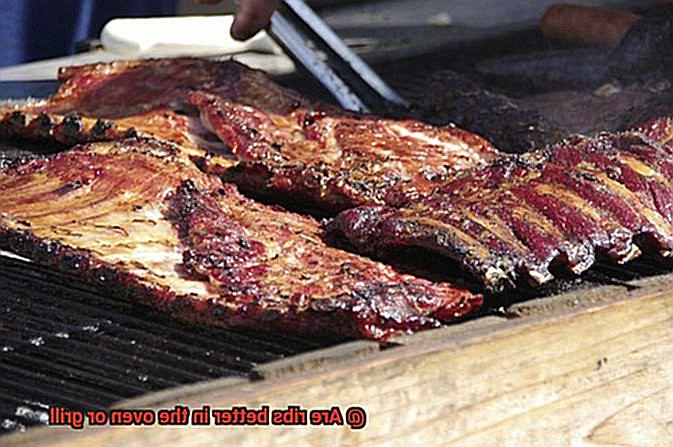
Oven Cooking for Tender and Succulent Ribs:
On the other hand, cooking ribs in the oven provides more control over the temperature and ensures even cooking throughout. Oven-cooked ribs are typically cooked at a lower temperature for a longer period, resulting in tender and succulent meat that easily falls off the bone. This method also allows for the use of marinades and rubs that can infuse additional flavors into the meat.
Convenience and Accessibility:
Oven cooking offers convenience as it requires less monitoring and attention compared to grilling. This makes it a preferred choice for those who prefer a hands-off approach or have limited time to dedicate to cooking. Additionally, some individuals may not have access to a grill or live in an apartment where grilling is prohibited, making the oven their only option.
Conclusion
In conclusion, the age-old debate of whether ribs are better in the oven or on the grill boils down to personal preference. Each method boasts its own unique advantages and delivers mouthwatering results. It all comes down to what you crave most in your ribs.
Grilling ribs on the barbecue offers an unrivaled sensory experience that brings out the absolute best in this succulent cut of meat. The open flames dance and kiss the surface, infusing it with a smoky and charred essence that simply cannot be replicated in the confines of an oven. The result? A flavor explosion that tantalizes your taste buds like no other. Not to mention, grilling creates a crispy exterior that adds an irresistible crunch to each bite. And let’s not forget about the versatility it brings – from tangy marinades to zesty sauces, grilling allows you to explore a world of flavors. Plus, there’s something undeniably magical about gathering around a sizzling grill with friends and family, creating memories as you cook.
However, cooking ribs in the oven presents its own set of advantages that should not be overlooked. The steady and controlled heat ensures flawlessly cooked meat every single time. No more worrying about unevenly cooked sections or overdone edges – oven cooking guarantees a consistent texture and taste throughout. And let’s not forget about how it seals in all those precious juices and flavors, resulting in tender perfection with every bite. Convenience is also a major selling point here – rain or shine, you can cook your ribs indoors without missing out on any of the deliciousness. Plus, with different cooking techniques like slow-roasting or braising at your disposal, you have even more options for achieving rib nirvana.
But why limit yourself to just one method when you can have the best of both worlds? By combining grilling and oven cooking techniques, you elevate your rib-cooking game to new heights. This hybrid approach takes flavor to the next level, creating a symphony of smoky intensity and tender perfection. It adds an enticing textural appeal that leaves you craving more.
And with precise temperature control at your fingertips, you can achieve rib perfection every single time. Not to mention, it’s a time-saving technique that allows you to spend less time fussing over the grill or oven and more time enjoying those delectable ribs.


